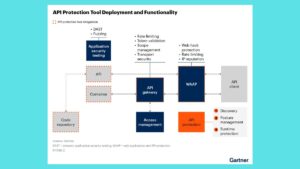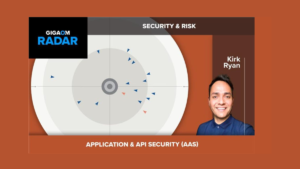Employee Engagement Tools: Enhancing Workplace Culture in the Digital Age

In today’s rapidly evolving digital landscape, maintaining a strong workplace culture is more challenging yet more critical than ever. As remote work becomes the norm and hybrid workplaces emerge, organizations must find innovative ways to keep their employees engaged, motivated, and connected. This is where employee engagement tools come into play. These tools not only help companies sustain a positive culture but also drive productivity, job satisfaction, and overall organizational success. In this blog, we will explore how employee engagement tools are enhancing workplace culture in the digital age.
1. The Importance of Employee Engagement in the Digital Age
Why Engagement Matters
Employee engagement goes beyond mere job satisfaction; it’s about fostering a deep connection between employees and their work, colleagues, and the organization. Engaged employees are more productive, more likely to stay with the company, and more committed to the organization’s goals. In the digital age, where physical interactions are limited, maintaining high levels of engagement is crucial for sustaining a strong workplace culture.
Challenges in the Modern Workplace
The shift to remote and hybrid work models has brought new challenges to employee engagement. Without the traditional office environment, employees can feel isolated, disconnected, and disengaged. This makes it harder for organizations to cultivate a sense of belonging and shared purpose. Employee engagement tools have become essential in addressing these challenges, helping to bridge the gap between remote employees and their teams.
2. Key Features of Employee Engagement Tools
Communication and Collaboration Platforms
Effective communication is the backbone of employee engagement. Tools like Slack, Microsoft Teams, and Zoom have become indispensable for facilitating real-time communication and collaboration among remote teams. These platforms offer chat, video conferencing, and file-sharing capabilities, making it easier for employees to stay connected and work together, regardless of their location.
Pulse Surveys and Feedback Mechanisms
Employee feedback is crucial for understanding engagement levels and identifying areas for improvement. Tools like Culture Amp, Officevibe, and TINYpulse allow organizations to conduct regular pulse surveys, gather feedback, and measure employee sentiment. These tools provide valuable insights into employee experiences, enabling companies to make data-driven decisions that enhance workplace culture.
Recognition and Rewards Programs
Recognition is a powerful driver of employee engagement. Tools like Bonusly, Kudos, and Achievers enable organizations to create formal recognition and rewards programs. These platforms allow employees to recognize and reward their peers for their contributions, fostering a culture of appreciation and motivation. By integrating recognition into daily workflows, companies can ensure that employees feel valued and appreciated.
Learning and Development Platforms
Continuous learning and development are key to keeping employees engaged and motivated. Tools like LinkedIn Learning, Udemy for Business, and Degreed offer employees access to a wide range of courses and training programs. These platforms empower employees to develop new skills, advance their careers, and stay engaged with their work. By investing in employee development, organizations can create a culture of growth and innovation.
3. How Employee Engagement Tools Enhance Workplace Culture
Building a Sense of Community
Employee engagement tools play a crucial role in building and maintaining a sense of community in the workplace. Communication platforms, for example, enable employees to stay connected with their colleagues, participate in team activities, and share their experiences. Social features like chat rooms, virtual water coolers, and online forums help create a sense of belonging, even in remote work environments. By fostering social connections, these tools contribute to a positive and inclusive workplace culture.
Promoting Transparency and Trust
Transparency is key to building trust within an organization. Employee engagement tools that facilitate open communication, regular feedback, and real-time updates promote transparency at all levels. For example, tools that allow employees to see company-wide goals, progress, and decision-making processes help create a culture of openness and accountability. When employees feel informed and included, they are more likely to trust their leaders and remain engaged in their work.
Driving Employee Well-being
Employee well-being is a critical component of engagement. In the digital age, well-being tools like Calm, Headspace, and Wellness Coach have become increasingly popular. These tools offer employees access to mindfulness programs, stress management techniques, and wellness resources. By prioritizing employee well-being, organizations can create a supportive work environment that promotes both physical and mental health. This, in turn, enhances engagement and contributes to a healthier workplace culture.
Encouraging Continuous Improvement
A culture of continuous improvement is essential for long-term success. Employee engagement tools that offer learning and development opportunities, regular feedback, and recognition programs encourage employees to strive for excellence. These tools create an environment where employees are motivated to improve their skills, contribute to the organization’s goals, and take ownership of their work. By fostering a growth mindset, organizations can drive innovation and maintain a high-performing workplace culture.
4. The Future of Employee Engagement Tools
AI and Machine Learning
The future of employee engagement tools will likely be shaped by AI and machine learning. These technologies have the potential to offer personalized engagement strategies, predictive analytics, and automated feedback mechanisms. For example, AI-powered chatbots could provide instant support to employees, while machine learning algorithms could analyze engagement data to identify trends and recommend interventions. As these technologies continue to evolve, they will play an increasingly important role in shaping workplace culture.
Integration with Other HR Technologies
Another trend to watch is the integration of employee engagement tools with other HR technologies, such as HRIS (Human Resource Information Systems) and performance management platforms. By integrating these tools, organizations can create a seamless employee experience, where engagement, performance, and development are all interconnected. This holistic approach will enable companies to build a more cohesive and supportive workplace culture.
Conclusion
In the digital age, employee engagement tools have become essential for maintaining a strong workplace culture. These tools enable organizations to overcome the challenges of remote and hybrid work, fostering communication, collaboration, and a sense of community. By leveraging these tools, companies can enhance employee engagement, promote well-being, and drive continuous improvement. As technology continues to evolve, employee engagement tools will play an increasingly important role in shaping the future of work and workplace culture. Organizations that embrace these tools will be better equipped to create a positive, inclusive, and high-performing work environment that meets the needs of their employees and supports their long-term success.





